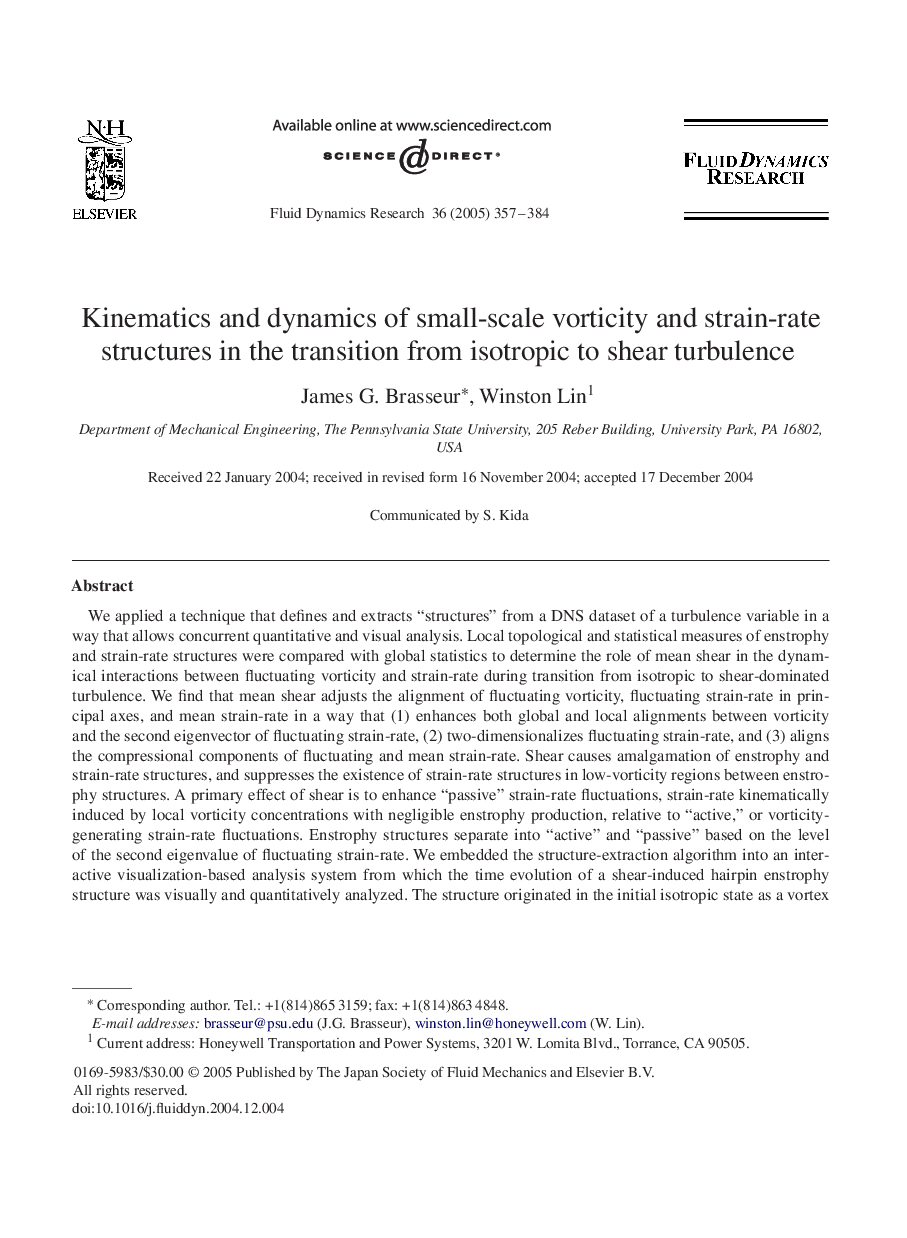| Article ID | Journal | Published Year | Pages | File Type |
|---|---|---|---|---|
| 9703445 | Fluid Dynamics Research | 2005 | 28 Pages |
Abstract
We applied a technique that defines and extracts “structures” from a DNS dataset of a turbulence variable in a way that allows concurrent quantitative and visual analysis. Local topological and statistical measures of enstrophy and strain-rate structures were compared with global statistics to determine the role of mean shear in the dynamical interactions between fluctuating vorticity and strain-rate during transition from isotropic to shear-dominated turbulence. We find that mean shear adjusts the alignment of fluctuating vorticity, fluctuating strain-rate in principal axes, and mean strain-rate in a way that (1) enhances both global and local alignments between vorticity and the second eigenvector of fluctuating strain-rate, (2) two-dimensionalizes fluctuating strain-rate, and (3) aligns the compressional components of fluctuating and mean strain-rate. Shear causes amalgamation of enstrophy and strain-rate structures, and suppresses the existence of strain-rate structures in low-vorticity regions between enstrophy structures. A primary effect of shear is to enhance “passive” strain-rate fluctuations, strain-rate kinematically induced by local vorticity concentrations with negligible enstrophy production, relative to “active,” or vorticity-generating strain-rate fluctuations. Enstrophy structures separate into “active” and “passive” based on the level of the second eigenvalue of fluctuating strain-rate. We embedded the structure-extraction algorithm into an interactive visualization-based analysis system from which the time evolution of a shear-induced hairpin enstrophy structure was visually and quantitatively analyzed. The structure originated in the initial isotropic state as a vortex sheet, evolved into a vortex tube during a transitional period, and developed into a well-defined horseshoe vortex in the shear-dominated asymptotic state.
Keywords
Related Topics
Physical Sciences and Engineering
Engineering
Mechanical Engineering
Authors
James G. Brasseur, Winston Lin,
